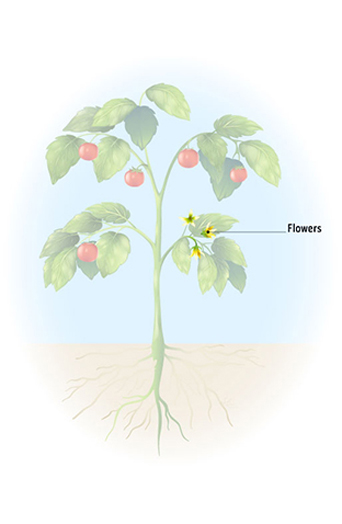Origin: a Latin derivative
meaning "Gift of the Earth."
- Shop
-
Our Story
- View Our Story Home
-
Who we are...
-
Who we are...
An essential oil company changing the world one drop at a time.
- About doTERRA
- Our Story
- Executives
- Science
-
-
What we do...
-
What we do...
Provide pure, high quality essential oils and products.
- About Essential Oils
- What is an essential oil?
- Why doTERRA?
- Essential Oil Safety
-
-
Why we do it...
-
Why we do it...
To empower you and your loved ones to live a wellness lifestyle.
- The dōTERRA Difference
- Co-Impact Sourcing
- CPTG® Quality Control
- Global Botanical Network
- Product Innovation
- Source to You
- Co-Impact Sourcing Projects
- Bulgaria
- Guatemala
- Additional Projects
-
-
dōTERRA[doh-ter-ah]
Video disabled by your privacy settings
-
Discover
- View Discover Home
- Healing Hands
- Product Education
- Blog
- Tools
-
doTERRA Events
 See All Events
See All Events
- Resources
- Help
Part 2: Plant Structure—Flowers

Flowers are the reproductive structures of the plant. They house all of the plant’s reproductive organs and make the plant’s sex cells. Both male and female sex cells are produced within the flower, and as is the case with other organisms, one of each type of the reproductive cells must come together before a new plant can be produced. Two mechanisms of reproduction are possible in plants: sexual reproduction (which requires two plants or two plant parts), or asexual reproduction (which uses the reproductive parts of just a single plant). Flowers are often brightly colored, sweet to the taste, and have a pleasant aroma. These characteristics attract insects, birds, and other animals that help in the reproductive process by transferring sex cells between plants, plant parts, or to new locations.
Essential oils are isolated from the flowers or flowering stems of lavender, jasmine, Roman chamomile, ylang ylang, and rose.
-
Share
- Share on Facebook
- Tweet this
- Pin it
-
Get Link
- Hi-Res Image




